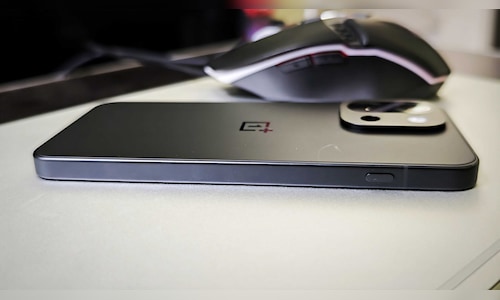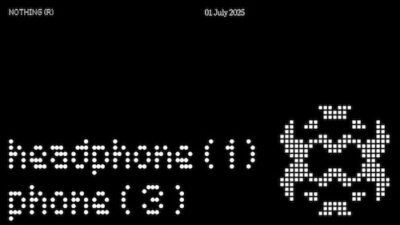In this context, OnePlus’ debut compact flagship, the OnePlus 13s, is quite an impressive device wrapped in a, well, compact design.
Admittedly, other brands have also launched phones that are equally compact
, if not more so: examples include the Google Pixel 9a and the Samsung Galaxy S25. Both the Pixel 9a and the S25 feature the latest and most robust processors from their respective brands. In this competitive landscape, the S25 boasts the Snapdragon 8 Elite chipset, which is nearly identical to the SoC that’s in the 13s. However, the 13s comes equipped with significantly superior cameras, a larger battery, and additional features that make it particularly appealing to me.
Also read: OnePlus launches Pad 3
Upon holding the phone, I was immediately struck by how comfortable it felt: it wasn’t so heavy that it became a burden, nor so light that I constantly worried about dropping it. Weighing 185 grams and measuring just over 8 mm thick, it occupies a sweet spot — it possesses the right amount of heft and fits perfectly in your palm, making one-handed use effortless.
The smooth finish on the aptly named Black Velvet variant (which I had the chance to review) offers a soft touch, tempting me to use the smartphone without a case, a choice made easier due to its smaller size compared to most flagship models available.
The included protective case may be basic, but it fits the 13s snugly and adds minimal bulk, so, in this instance, using this phone with a case doesn’t detract from the experience of handling the device.
Processing power, enduring battery life
The OnePlus 13s is driven by Qualcomm’s latest and greatest, the Snapdragon 8 Elite SoC, featured in many flagship smartphones of this generation.
Consequently, the device operates quickly, efficiently, and with ample power — the performance-to-footprint ratio seems remarkably disproportionate (I know it sounds odd, but that’s how I feel).
ALSO READ | iQOO Neo 10 Review: A feature-rich, mid-range performer
Regarding battery life, the 5850 mAh lithium-ion battery in the OnePlus 13s can easily last a day and a half, if not longer. In my regular usage (moderate-to-heavy), I found that I still had over 40% left after a full day. On lighter usage days, I’ve been able to go two days without charging. With some battery optimization, I believe you could stretch it even further: this is a battery that keeps going.
Cameras
Spoiled by the likes of the Xiaomi 15 Ultra and the vivo X200 Pro, I anticipated being dissatisfied with the OnePlus 13s’ cameras, but I was pleasantly surprised.
The dual 50MP cameras on the back, consisting of a primary wide-angle and a telephoto lens, performed exceptionally well in nearly every lighting scenario — taking a bad shot in bright daylight is virtually impossible, while the nighttime capabilities truly shine, capturing ample detail and avoiding overexposing elements for a representation that closely mirrors reality. Naturally, in lower light settings, the post-processing ramps up, meaning photos taken in near-total darkness will show more detail than what the naked eye can perceive.
Overall, it’s a reliable camera system that simply works. I’ll be publishing a comprehensive camera review soon with samples, so stay tuned for that.
Plus Key

(Vijay Anand/CNBC-TV18)
Upon hearing that OnePlus was replacing the iconic alert slider with an iPhone-like programmable button, I felt a bit disappointed. The convenience of the slider, which allows for an effortless switch between ring, vibrate, and silent modes, was unmatched. But you know what? I appreciate how OnePlus has implemented the new Plus Key.
Yes, in terms of operation, it closely resembles the iPhone’s Action Button, with a similar interface for mapping it to different functions.
However, the Plus Key is set as an alert button by default, allowing you to switch between all three modes with just a press of the button. In my opinion, this is easier than using the slider because you no longer need to rely on muscle memory to remember which slider position activates which mode.
The most significant advantage of the Plus Key shines through when it’s mapped to Mind Space, OnePlus’ AI hub.
Mind Space

OnePlus made a noteworthy entry into the ‘AI on smartphones’ domain with Mind Space. The Plus Key can be activated to launch Mind Space, which then reads whatever is on the screen and generates memos, notes, reminders, and more with impressive accuracy.
It can interpret pamphlets, advertisements, or even text visible in the camera’s viewfinder, creating actionable inputs in Mind Space. This is undoubtedly my favorite use of AI on a smartphone to date.
The verdict
To summarize — it offers the fastest smartphone processor available, a battery that lasts indefinitely, an outstanding display and multimedia experience, excellent cameras, and a remarkably practical implementation of AI in a smartphone. All of this for ₹54,999 (with a discount of ₹5,000 thanks to the launch offer).
This is the simplest recommendation I can make — buy it, and you will not regret it.
ALSO READ | Apple gives Tata India iPhone repair business as partnership expands: Report



